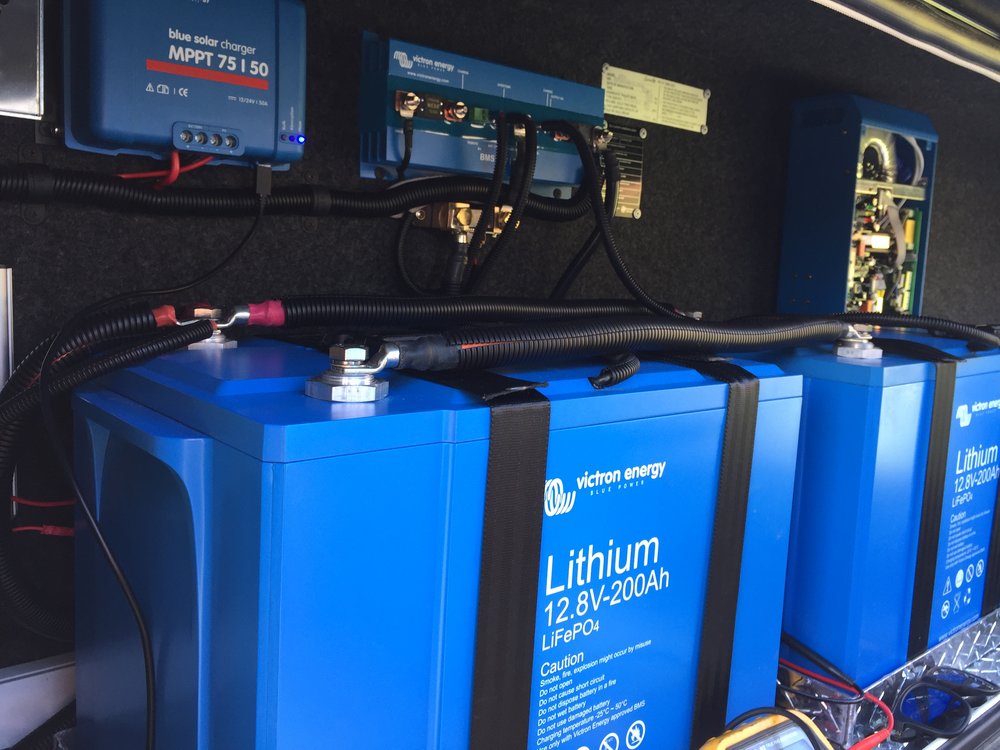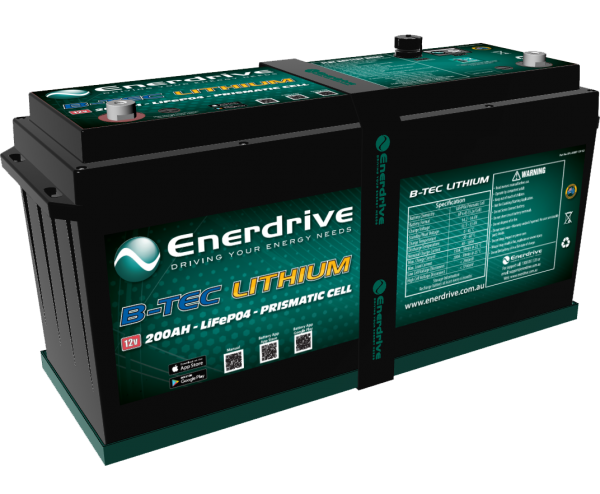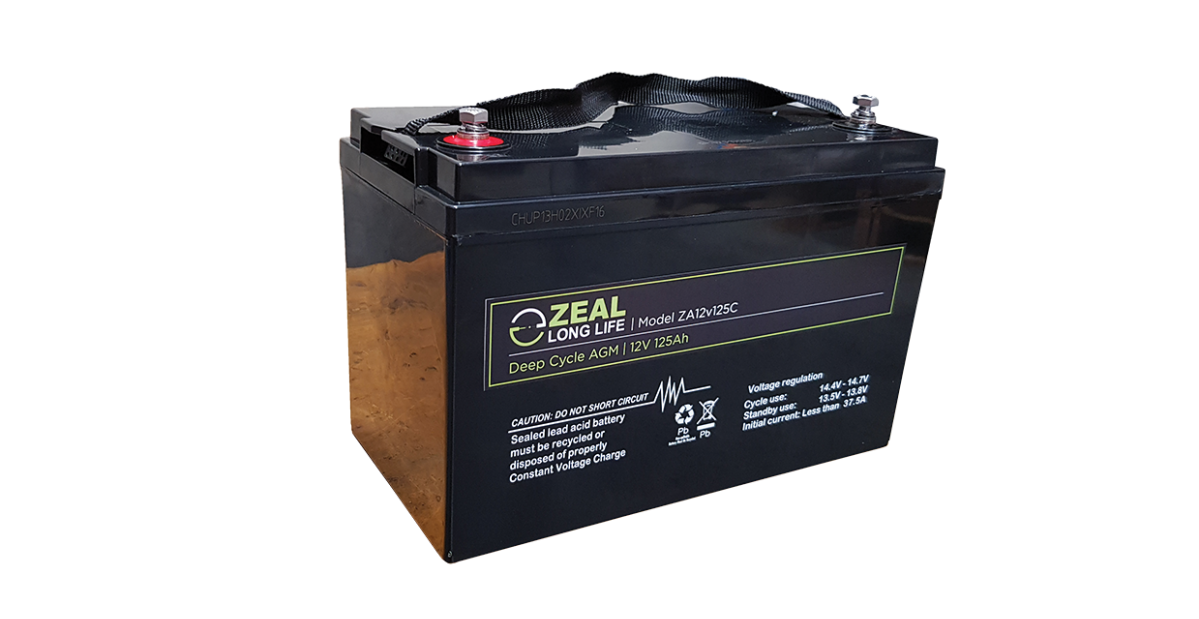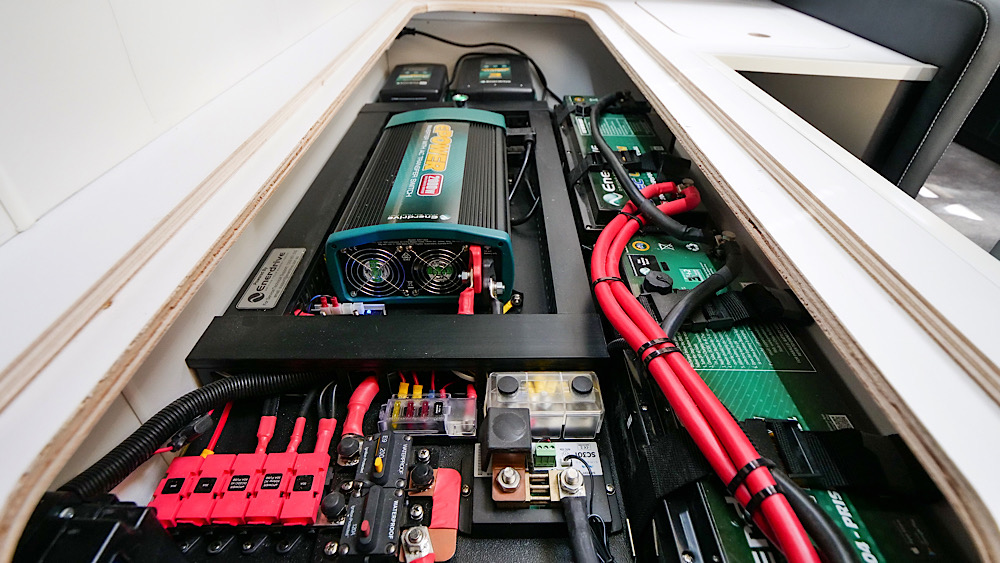How we use our caravan batteries and the expectations we place on them are very different to that of a 12V car battery. It is important to have an understanding of your caravans battery and its associated systems, which will generally include solar panels and possibly connections to your vehicle.
Let’s Start with Explaining the Types of Batteries:
The most common type of battery used for caravan, camping, marine and automotive would be lead-acid. Why, you may ask? This is due to the high level of reliability coupled with lower associated expenses when compared to other types of batteries. There are 2 main types of lead-acid batteries that deliver different types of:
-
Starting & Cranking batteries which offer quick, powerful short bursts of energy on start-up.
-
Deep cycle batteries which provide slow and consistent usage over longer periods of time.
You may be wanting to know which charge type is better? This really comes down to the application as this will determine the life expectancy of your battery as well as the performance you can come to expect. Generally speaking, a starting or cranking battery is used for automotive use, whilst caravanners, campers and mariners will use a deep cycle lead-acid battery.
.png)
Lead Acid Battery Construction:
The batteries construction is what greatly differentiates a starting/cranking battery to a deep cycle battery.
Starting/Cranking Batteries:
A starting/cranking battery, has thinner lead plates inside which help provide a greater surface area of contact between the lead and acid resulting in a reaction that provides more power output and faster recharge times making them ideal for starting or cranking engines. Generally, these types of batteries are used for cars, generators, engines that require short bursts of energy upon start-up. The high output current can be measured by cold cranking amps (CCA). These batteries are designed to be continually recharged, thus holding the maximum capacity charge possible (this is usually between 90%-100% charge). The CCA is more important than Amp hours as it will tell you how much power is in the punch so to speak. High CCA batteries are not used for running appliances while in your caravan. For that application, we focus on deep cycle batteries that come in lead acid (AGM, Gel & Lithium).
Whilst the above is true for lead acid batteries. Deep Cycle Systems (DCS) range of lithium batteries have the ability to start engines. Each battery features a Lithium Cranking Amps (LCA) ranging from 300 to 1300.
Deep Cycle Batteries:
A deep cycle battery has thicker lead plates resulting in less surface area contact between the lead and acid which is designed to slowly discharge and recharge making it ideal for running appliances such as fridges and lights while camping.
A deep cycle battery refers to the charge and discharge cycle of the battery. Thus, the more you drain/discharge your battery, the deeper the cycle. This is measured in Amp hours (Ah). Designed to be discharged at a low and consistent amperage over a long period. It is recommended that a deep cycle battery be recharged, above or before reaching 50% battery capacity in order for a longer life. These batteries are available in wet cell, gel and AGM battery varieties.
Types of Deep Cycle Batteries:
As we have just discussed, both deep cycle and starting/cranking batteries can be categorised into 3 varieties. These are:
-
Lithium
-
AGM (Abosrbed Glass Matt)
-
Gel Cell
The type of battery you choose should suit the correct application in which you wish to use your caravan batteries in order to achieve longer life and improved performance of your caravan battery.
Let’s discuss the differences in the types of lead-acid batteries.
Lithium:
Lithium deep cycle batteries have previously been thought of as too expensive, however recent competition in the market has lead to a wide range of affordable options. Lithium batteries are much lighter and more compact than traditional lead acid batteries. Essentially you can fit alot more amps in the same footprint. A 200Ah lithium battery is equivalent to 360Ah of a lead acid battery. This Amp hour gain is due to the ability to discharge lithium battery right down to 80% as opposed to only 50% in a lead acid battery. Lithium batteries also come with longer warranties (up to 7 years) and longer cycle of life (2,000 - 2,500). Lithium batteries also have the added advantage of being able to produce higher discharge currents to run high powered 240V inverters.
AGM (Absorbed Glass Matt):
AGM batteries are leak proof, shock proof, vibration resistant which is why these batteries are generally considered the pick of the bunch as far as Caravan, RV and Camping applications are concerned. An Increased discharge and recharge efficiency compared to wet cells and are less sensitive to over-charging compared to Gel types, these batteries tend to last longer and perform better overall - Especially when consistently kept above a 50% battery capacity long term. The current AGM battery price point definitely makes this a value for money option worth considering.
Gel Cell:
The Gel cell has a silica additive that effectively turns the acid inside to a jelly like substance. The advantage of gel batteries over wet cell and AGM batteries is that it is the most effective for ‘deep cycle’ applications, especially in hot weather applications. These batteries are also designed to be leak, shock and vibration resistant. The disadvantage is that it is the most expensive lead-acid type battery and can become very sensitive to overcharging, hence the correct Gel type battery charger must be used to prevent poor performance and premature battery failure. While Gel Cells are considered the best for continual deep cycle applications, AGM (Absorbed Glass Matt) technology is rapidly taking over the role of Gel Cells due to their all-round performance and price in comparison.
What Does Battery Amp hours Mean?
Amp hours are a measurement of your battery’s storage capacity. It will give you an indication as to how long your battery will last, providing that you know the amperage draw of your appliance/s. Thus a 100Ah rated battery will deliver 100 amps of power over a nominated period of time. The Amp hour calculation is depends on the battery chemistry. For lead acid deep cycle batteries (gel / AGM), it is important to consider that the total time of discharge and the amperage drawn is not a linear relationship.
The slower the discharge rate, the more efficient your battery will be. For this reason manufacturers of lead acid batteries have come up with a ‘standard’ to base their Amp hour rating, which is generally over a period of 20 hours. This means that over a discharge period of 20 hours, a 100Ah battery will typically deliver 100 Amps in normal conditions. It should be noted that if you rapidly discharge your battery that it will become in-efficient, losing up to a third of your total amps. Be sure to check the manufacturer’s specifications of your battery - Especially on cheaper lessor known brands entering the market.
The Amp hour calculation is much simpler with deep cycle lithium batteries as the relationship between Amp hours and time is linear. For example:
Lithium Batteries:
Battery Size = 200Ah
Appliance draw = 5 Ah / Hour
Run time is 40 Hours (theoretical 100% depth of discharge, example purposes only)
Appliance Draw = 10 Ah / Hour
Run time is 20 Hours (theoretical 100% depth of discharge, example purposes only)
Lead Acid Batteries (AGM/Gel):
Battery Size = 100Ah
C rating = 20
Appliance draw = 5 Ah / Hour
Run time = 20 Hours
Appliance Draw = 10 Ah / Hour
Run time does not equal 10 Hours (will be slightly less)
If load is greater than C rating battery run time is less efficient. Relationship is not linear.
What Size Battery Do I Need For My Caravan?
A very basic guide to selecting your battery size would be to understand and work out your average amp draw from the appliances you plan to run using your battery and multiply this by the length of time in hours you require power. This will give you an approximate total Amp hours required from your battery. To calculate the average amp draw from your appliances, please refer to the product manual for manufacturers specifications.
For example: Say you have an appliance that has an average Amp draw of 5 Amps per hour. You want run this setup for 20 hours without the use of a charger. (20 hours X 5 Amps per hour = 100AH) You would theoretically need a 100AH rated battery.
Of course there are many factors that will influence the ACTUAL Amp hour output of your battery that often results in less Amp hours than the manufacturers rating. It is best to over-estimate your battery requirements by at least 20- 50% as an absolute minimum.
Factors you need to consider:
-
Connecting a charging system (solar panel/generator/mains power operated) will top up your battery reducing the total overall battery capacity needed. A 10 Amp / hour charger will give you an extra 100 Amps over 10 hours that you can factor in.
-
The typical Lead-Acid battery used in the Caravan Industry is rated accurately over a 20 hour discharge. Rapidly discharging your batteries over very short periods can reduce your Amp hour rating by up to 35% (on a conventional 100AH, rated at 20 hours battery, 65 Amp hours may be a more accurate amp hour rating over 1 hour discharge)
-
If you need to 240V AC, consider a high amp lithium battery coupled with a quality inverter. The Enerdrive ePOWER B-TEC 200Ah Lithium Battery has a max discharge current of 200A, which can power the Enerdrive ePOWER Pure Sine Wave Inverter 2000W / 12 volt with Remote, RCD & AC Transfer Switch. This can allow you to run luxury appliances like hair dryer, coffee machine and microwave from the comfort of your caravan.
-
Temperature! As a general rule the warmer the better for efficiency, with approximately 27 Degrees being the optimum temperature for accurate Battery Amp hour rating results.
-
Voltage Drop. The longer your cables, the more voltage drop will occur. Potentially this can increase the duty cycle duration of some appliances, meaning the motor has to run longer to achieve the same result draining your battery quicker.
-
Limited space. In the lithium range of batteries there is now a choice to have a slim line battery that can offer a huge capacity with a smaller surface area. This is achieved by the Enerdrive B-TEC 200Ah Slim Metal Case Lithium Battery. Coming in at only 530mm wide, 600mm high and a skinny 83mm depth. These batteries can be tucked away in ute canopies or caravan cupboards. With the option to store the battery in multiple positions it makes it the perfect problem solver for the next avid adventurer.
Battery Types Compared |
|||||
| Battery Types | Cost | Maintenance Required | Engine Bay Mounting | Weight | Vehicle Application |
| Lead | Low | Yes | Yes | Heavy | Start/aux |
| Calcium | Low | No | Yes | Heavy | Start/aux |
| AGM/Gel | Medium | No | No | Heavy | AGM- Start/aux Gel- Start AGM |
| Lead Crystal | Medium | No | Yes | Heavy | Aux |
| Lithium | High | No | No | Light | Aux |
DISCLAIMER* Please note, this advice is general in nature and we strongly recommend consulting the product manual and where relevant, a professional installer.
Comments (2)
Battery for an Avan Aliner
I have had to replace the battery in my 2004 Aliner [which I bought 2 years ago and have not used yet]. The original was a Bond battery [but I don't have info about the type now]. I asked the retailer for a replacement with a similar battery. I was sold a Delkor Marine and Liesure M27. Just checking to make sure this is suitable and is it OK for solar panel input. Also how do I keep tabs on how much charge is used? Thanks.By: Peter on
www.caravanrvcamping.com.au Response
Hi Peter, it was great to chat to you on the phone this morning. Don't hesitate to contact us again if you have any more questions to get you up and running offgrid
Mention chargers needed for different types
Eg, will a charger designed to charge an AGM battery still charge a LithiumBy: Terence Richard Roos on
www.caravanrvcamping.com.au Response
You are best to contact the supplier of your AGM charger to check on its compatibility with lithium. Alternatively you can call us on 1800 787 278 and we can check it out for you











